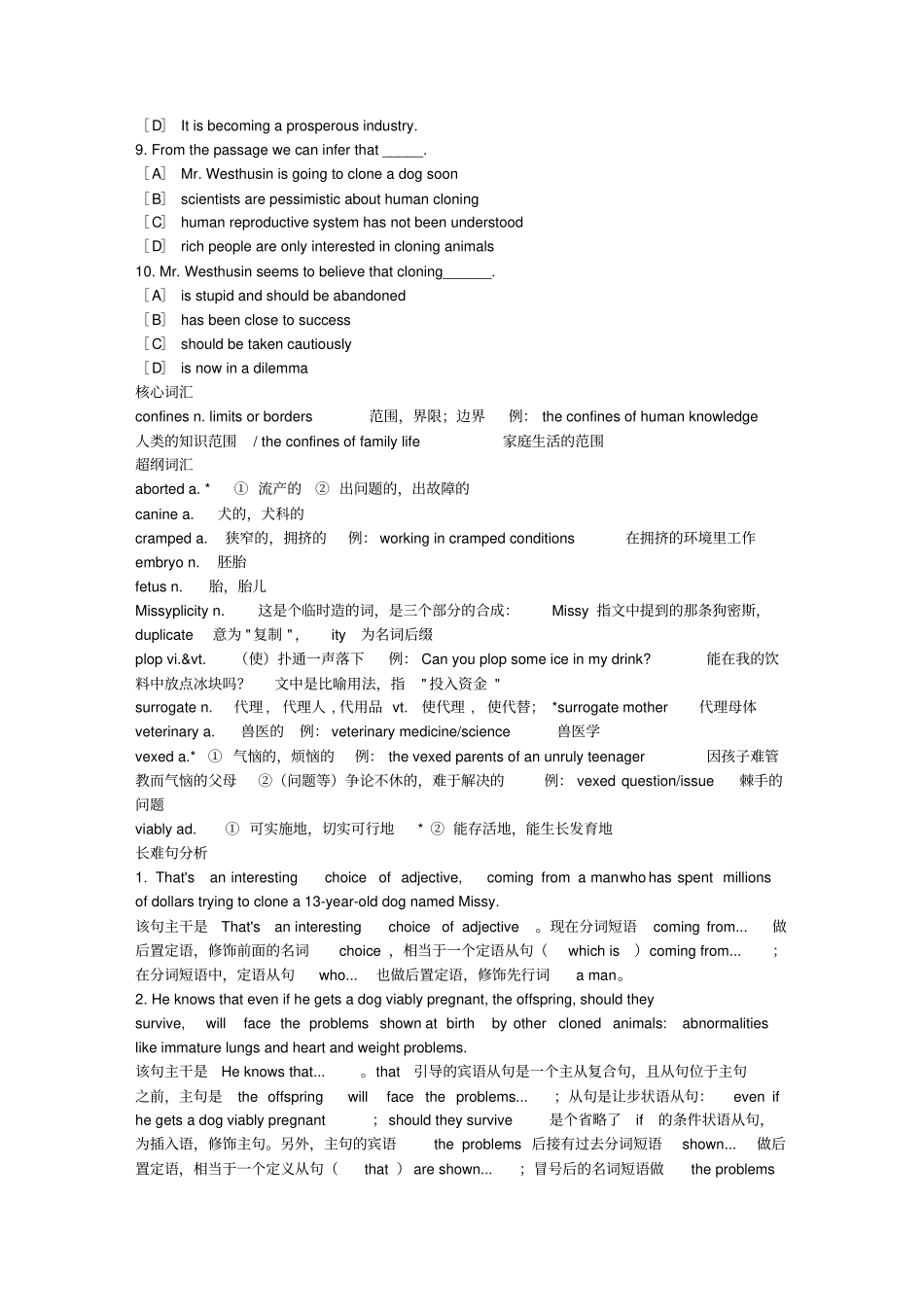考研英语阅读理解:克隆人和动物"I've never met a human worth cloning," says cloning expert Mark Westhusin from the cramped confines of his lab at Texas A&M University. "It's a stupid endeavor." That's an interesting choice of adjective, coming from a man who has spent millions of dollars trying to clone a 13-year-old dog named Missy. So far, he and his team have not succeeded, though they have cloned two calves and expect to clone a cat soon. They just might succeed in cloning Missy later this year-or perhaps not for another five years. It seems the reproductive system of man's best friend is one of the mysteries of modern science. Westhusin's experience with cloning animals leaves him vexed by all this talk of human cloning. In three years of work on the Missyplicity project, using hundreds upon hundreds of canine eggs, the A&M team has produced only a dozen or so embryos carrying Missy's DNA. None have survived the transfer to a surrogate mother. The wastage of eggs and the many spontaneously aborted fetuses may be acceptable when you're dealing with cats or bulls, he argues, but not with humans. "Cloning is incredibly inefficient, and also dangerous," he says. Even so, dog cloning is a commercial opportunity, with a nice research payoff. Ever since Dolly the sheep was cloned in 1997, Westhusin's phone at A&M College of Veterinary Medicine has been ringing busily. Cost is no obstacle for customers like Missy's mysterious owner, who wishes to remain unknown to protect his privacy. He's plopped down $3.7 million so far to fund the research because he wants a twin to carry on Missys fine qualities after she dies. But he knows her clone may not have her temperament. In a statement of ...


